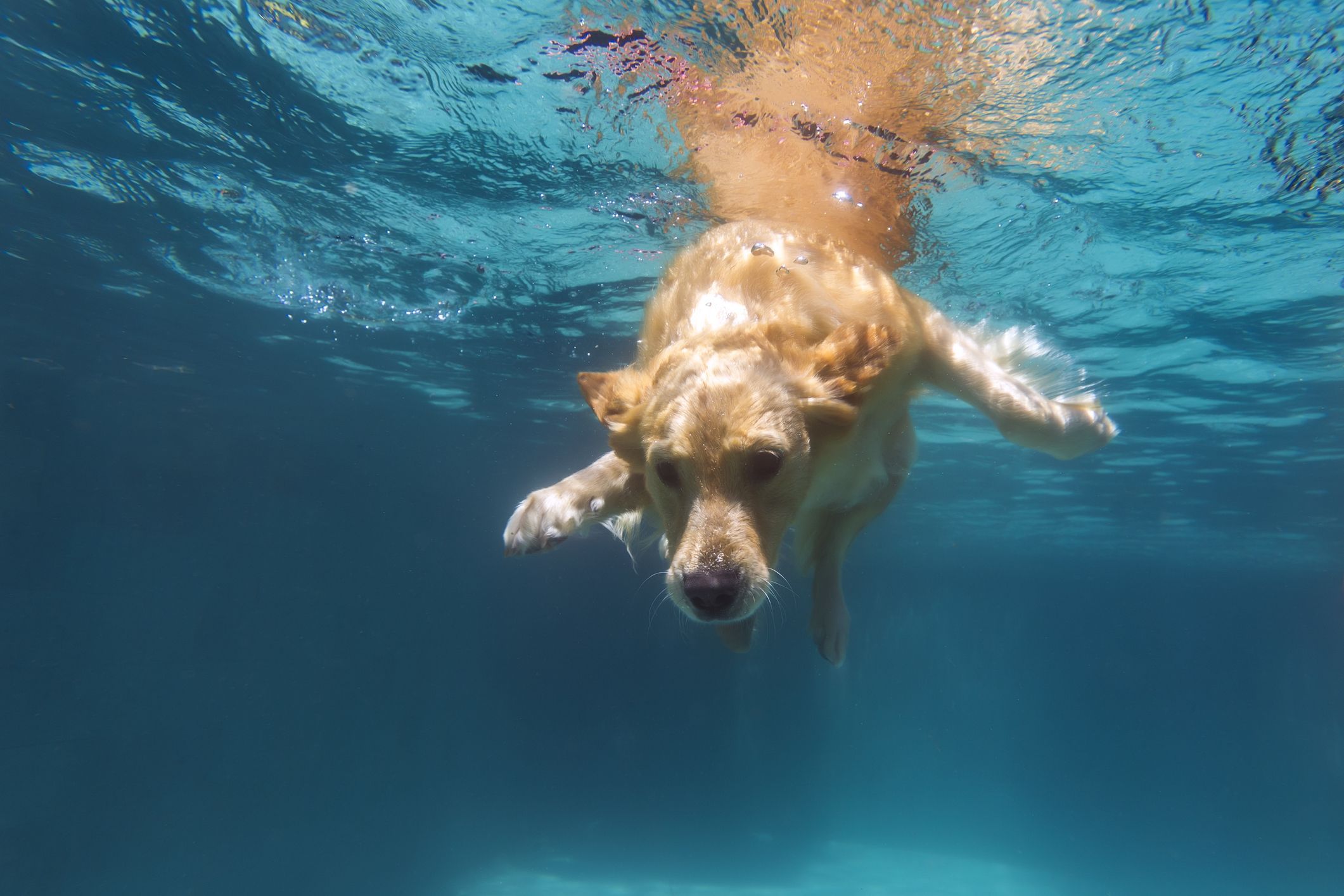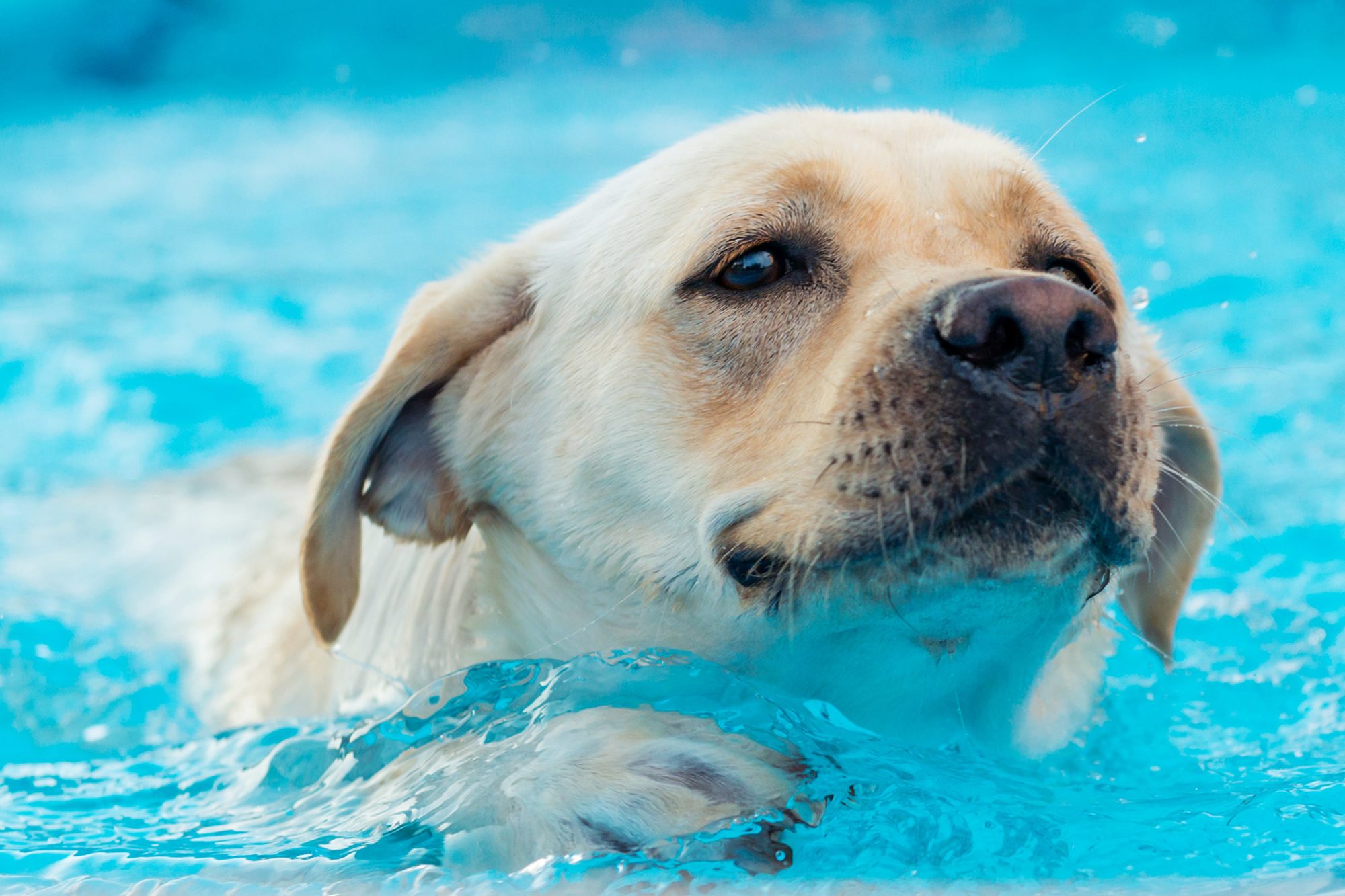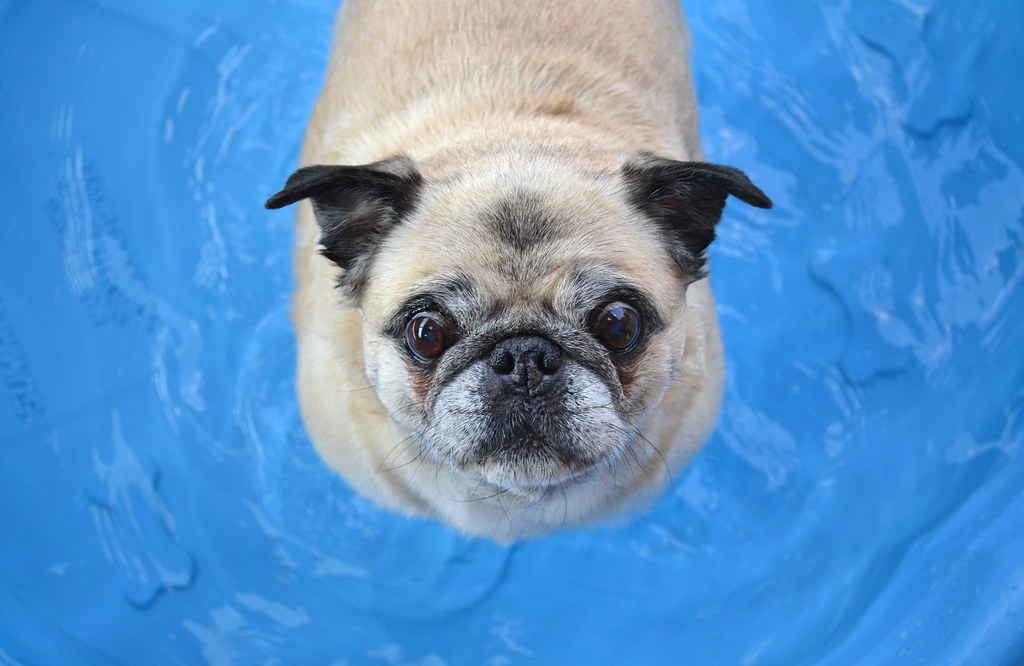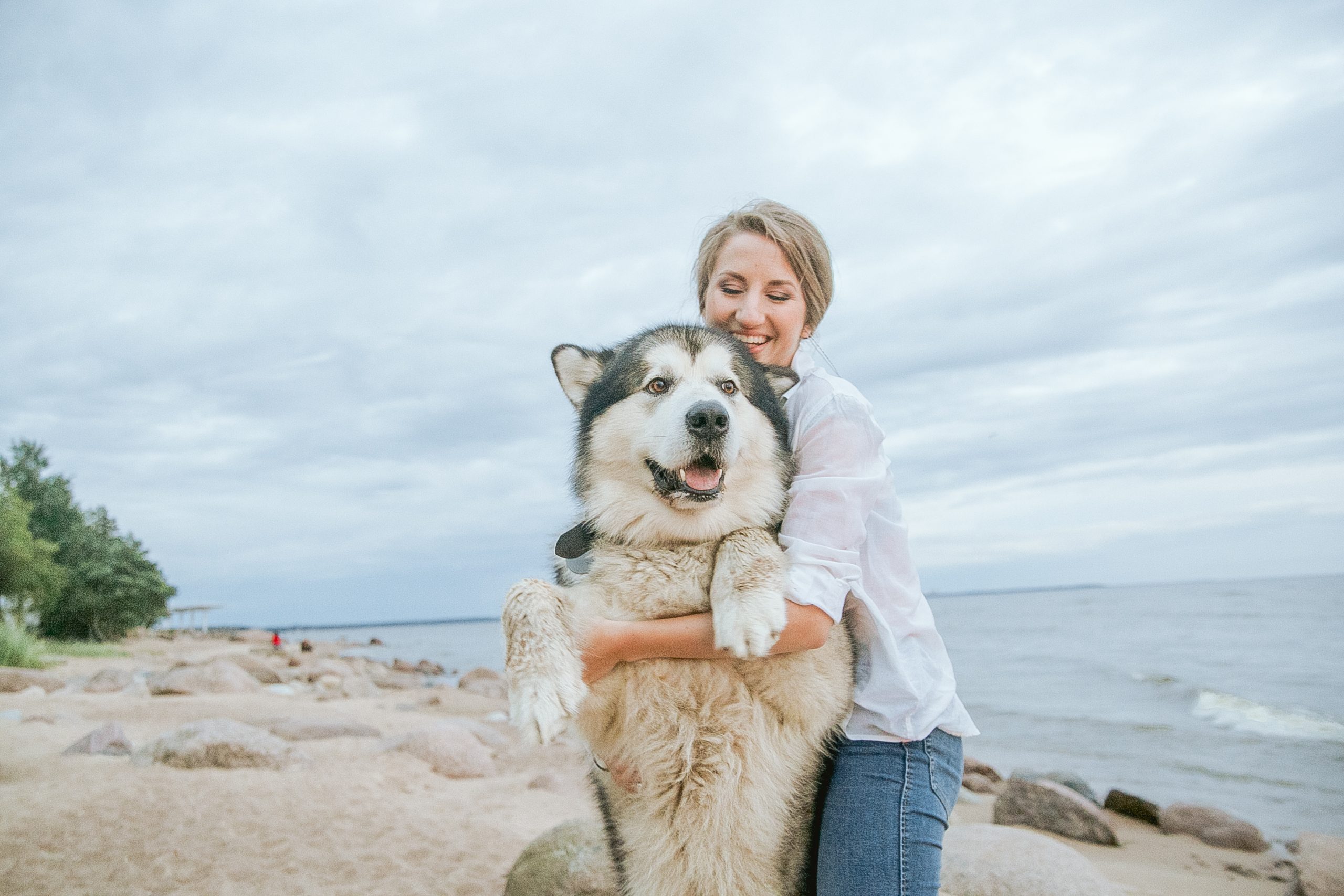Dogs and Swiming: No wonder your dog may be a swimming lover. Rushing into a swimming pool or a lake with pure joy reflects whether your dog likes swimming or not. However, teaching dogs how to get into the pool is yet possible considering your dog type to swim. When thinking about practicing some activities with your puppy it usually ends up with running, having a walk, or playing fetch. But when we consider merging exercise and joy in one place there’s no better way to get that than with swimming.
Swimming for dogs doesn’t shorten only to getting cooler on a hot summer day. Rather it can be way more beneficial for your pup’s overall body health. Starting from exercising every bone and muscle of the body to lungs function and range quality. Besides, getting in the pool with your canine companion can form a great way to foster the bond you both share in a short period!
If you have a swimming pool in your house’s backyard, then you may have considered getting your pup into it. And under most circumstances, properly maintained pools are safe for pets to get in. Though some may contain extra levels of chlorine or get much salty, chemicals that are not proper for dogs to swim may cause irritation or dryness especially if your dog is swimming for too long or on regular basis, the thing that makes it important to check your dog skin for any abnormal signs as redness or flaking after swimming.
Not forgetting that dogs are almost like children, they are both prone to swallow some water while swimming. the thing that should not happen as it leads to water intoxication condition and gastrointestinal tract causing vomiting as a symptom in rare cases.
Are all dogs able to swim?
Now, you may wonder which dog breeds can swim by asking: is my dog’s nature suitable for swimming activities? is there a good relationship between my Dog and swimming?. Some dog breeds are built naturally to get in the water without exceptions as their bodies are covered with oily coats to keep them warm? Also, they have webbed feet to make propelling through the water much easier. These include Labrador Retrievers, Irish Water Spaniel, English Setter dogs, and Portuguese Water Dogs as they are named.
Which dogs cannot swim?
On the other hand, some dog breeds cannot swim, such as Boxers, Bulldogs, Basset Hounds, and Corgis as these breeds usually have a large head in addition to thick, heavy fur which hinders swimming in pools. So if your puppy belongs to any of these breeds you must keep them away from deep pools around.
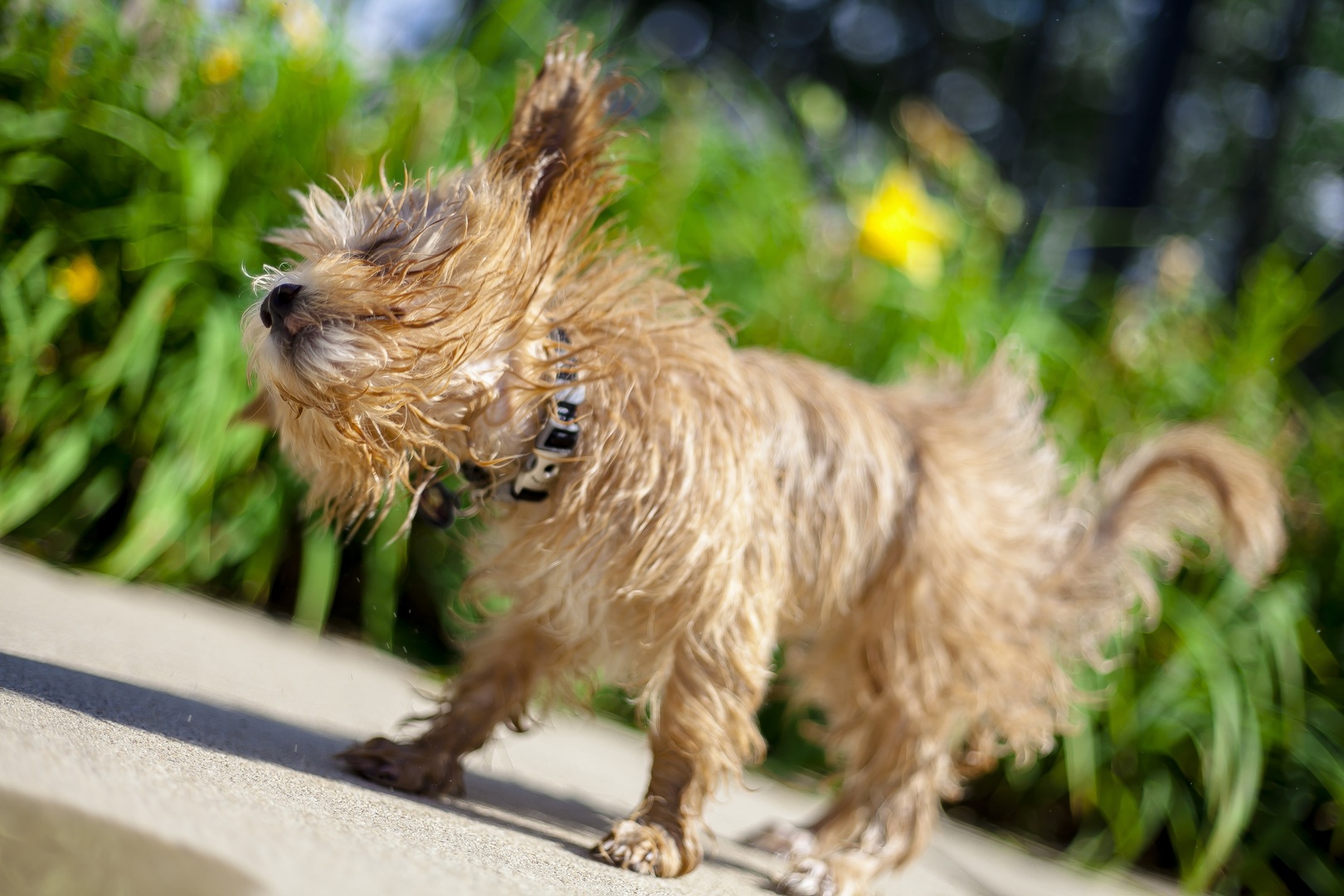
Of course, dogs’ body nature differs from humans. due to their heavy hair, the hair probably falls in the pool water affecting the chemical balance of it and the filtration system too. In addition, a dog’s coat tends to contain a lot of dirt that causes germs to pollute the water and could harm your body when entering the pool. To avoid such issues, make sure to brush your dog’s coat very carefully before getting him into the swimming pool.
Nails and paws also affect the pool in many ways as your dog’s sharp nails can easily damage the pool accessories, lines, and equipment necessary for human safety. And also considering the way dogs use their nails in swimming can be dangerous to other swimmers in the same pool so try to trim your pup nails regularly with keeping them smooth and clean.
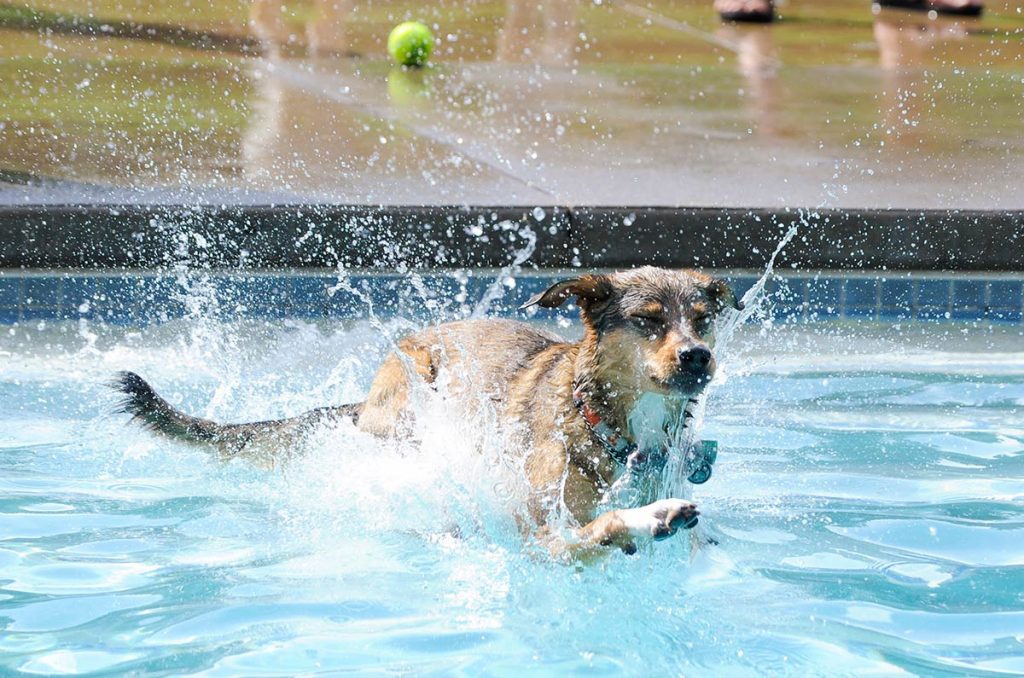
Why you should train your dog to swim?
Swimming for dogs is just like sports to humans, a great number of exercises your pup can benefit from by only going with you to swim are incredibly amazing! Here are 4 benefits to tossing your dog in the pool right away:
- Improving Overall Health
Taking your pup swim equates to having a cardio workout for its body. Swimming can be beneficial for your doggy lungs and heart muscle strength. It is proven that one minute of swimming equals 4 minutes of running for dogs. Not only toning muscles your puppy can get but also fat burn due to increased metabolism and improving circulation. All these benefits add up to an active, playful, happy dog with a healthy state.
- A Stress Relieving
It is impressive to know that dogs can get stressed also just like us humans. Swimming helps relieve their stress, especially for those with hyperactive energy as getting them into the pool for minutes of joy and moving all around is a great way to pent up their energy. Another privilege is that your pup would mostly get home exhausted which leads to quality sleep time the night.
- Suitable for Overweight dogs
If your dog is a little overweight it might be difficult to give him some exercise on land. It can be much easier to do some exercise on the water so your pup can burn some fat to help him get back to a healthy body weight with less risk of injury.
- Body cooling
Although strangely, puppies hate taking a bath, most of them enjoy rushing to the pools actively especially on hot summer days as some dogs with hairy coats feel the need to get their coats cooler so that they can play and run with freedom. In addition to taking your dog for a bath considering going swimming would be more fun for your canine companion.
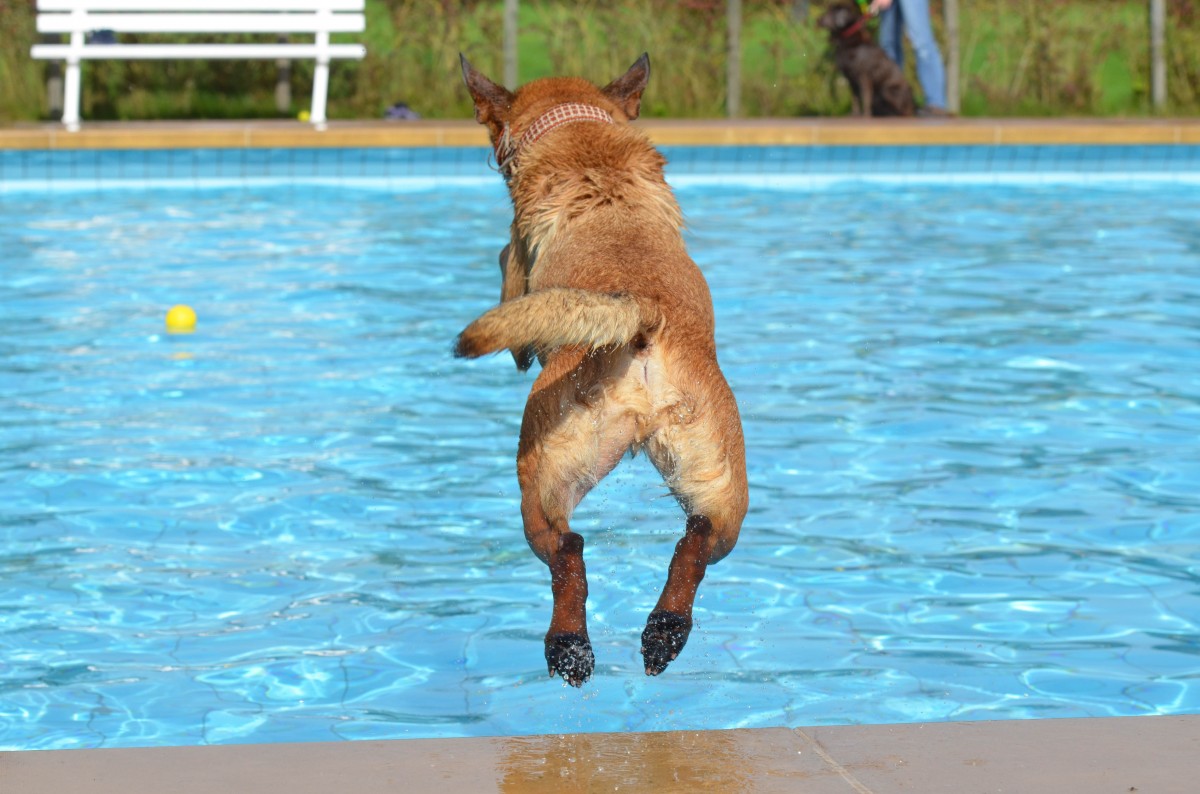
How to Get Your Dog into the Pool?
In some cases, untrained dogs can be apprehensive about getting in the water for their very first time, follow these steps to safely introduce your dog to a joyful swimming experience:
- Choose a shallow, slow-moving body of water such as a natural lake or a river avoiding the sea for the first time as its high waves can make your dog stressed the first-time swimming.
- You can also find some doggy pools made especially for dogs to swim. Under the supervision of experts and professionals which makes it the perfect safe environment.
- For your pup’s safety, make sure that there is a near exit such as a pool ramp or slope to get out at any time the dog feels uncomfortable.
- Start with getting your feet wet so your puppy can have the courage to follow along with your steps.
- Attach a small floating toy with you that triggers your dog to retrieve it from the water. Thus, he can get used to this environment so easily.
- Have some patience and take it slow with your doggy. Teaching a dog how to swim is quite like teaching a child to do so as it can take some time to learn this new skill.
- Praise your dog and reward him, the more you reward your doggy the more he follows your instructions.
- You can use a doggy life vest to help him safely float over the water. And don’t forget to place some food and water at breaks as the dog can get tired of swimming.
Swimming Pool Advice for Dog’s Safety
Whether your dog is a good swimmer or not, it remains important to never lose sight of him being beside or in the water. Even though dogs know how to swim, some don’t know how to get out of the water which may lead to a drowning risk. Thus, all dogs need supervision.
Introduce your puppy gradually to the water. Do not force him, especially for the very first time. Letting him explore the environment on his own makes him more comfortable with it so do not ever think of forcing him into the pool. Instead, start with his feet until you notice how comfortable he is with the water.
Before taking your pup to the beach or the sea it is necessary to be fully aware of his abilities of swimming as the sea usually doesn’t have a specific exit point where your dog can feel lost and unable to get out.
Swim with your dog a few times withholding his limb just to help him float easier but be careful of using his claws at you.
Because dogs are a lower body fat percentage with short legs, the thing that may not support much to float over the water considers buying a canine life vest designed only for dogs for their safety in the water.
That’s how swimming can be a great choice to exercise your dog in a joyful, playful environment with a less risk of injury remaining a healthy, happy canine companion all the time.


